Music theory you can use: 6 chord tricks for songwriters and producers
Go beyond the basics with these handy power-composer tips and techniques
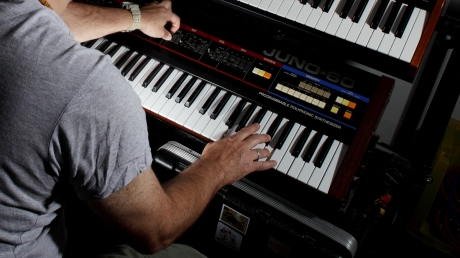
Ready to take your compositions to the next level? Here we have half a dozen nifty techniques that can be used to transform basic chord structures into far more interesting shapes and progressions. Let's go!
1. Smoother sequences with inverted chords
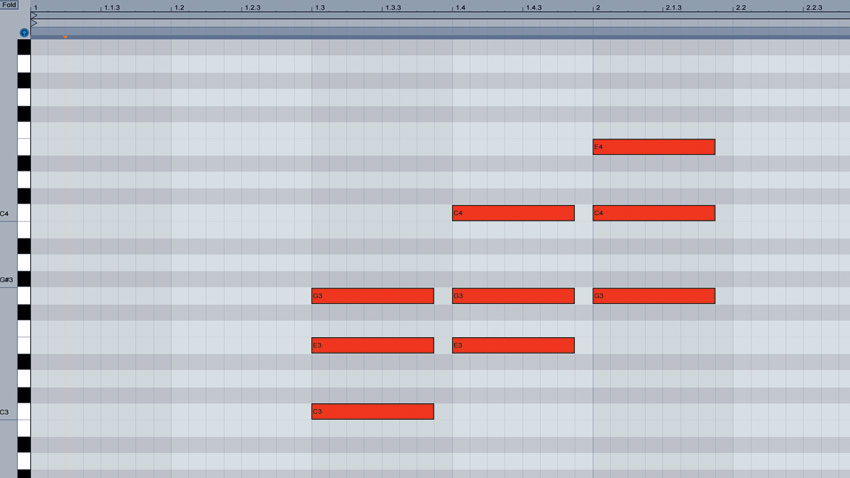
A normal C major chord is C-E-G, but you can easily change it to E-G-C, called the 'first inversion', or G-C-E, the 'second inversion' - the bass note has changed, but it's still the same chord, with the same root note, C. This can be used to create much smoother chord sequences.
To try an example, create a 100BPM project, download the assets and load Beat.wav; then use Chords.mid to, for instance, trigger Bazille CM's Computer Music » Joe Rossitter » Richmond Keys preset.
This C minor progression uses basic non-inverted triads. Select the lower two notes of all chords in bar 1 and 3, then transpose them up one octave - most DAWs have a shortcut key for this, such as Shift-Up Arrow.
Now hear how much smoother the progression is, since there's less movement from chord to chord. In the final bar, select all notes above (and including) D4, and drop those one octave for a cool descending chord progression. You may start to hear melodies in the chords' movement - there's one going on in ours, so duplicate the top note of each chord and place them one octave up, for an instant melody.
Non-inverted (root position) chords - Solo
Non-inverted (root position) chords - Mix
Inverted chords - Mix
Inverted chords with melody top-line - Solo
Inverted chords with melody top-line - Mix
2. Borrowed chords
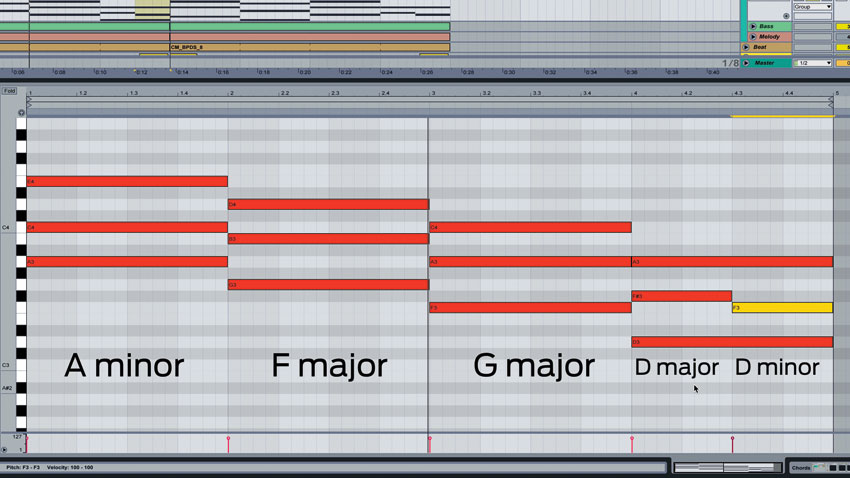
The occasional chord from a different scale - or key - can give your progressions an element of surprise. Borrowed chords are an easy way to achieve this - these are simply chords taken from the parallel minor or major key. So if your sequence is in A minor, you would borrow chords from A major; if you're in D major, you'll take them from D minor, and so on.
Click to download the tutorial files.
Get the MusicRadar Newsletter
Want all the hottest music and gear news, reviews, deals, features and more, direct to your inbox? Sign up here.
Without borrowed chord (chords only)
Without borrowed chord (full mix)
Without borrowed chord (no melody)
Borrowed D major chord - chords only
Borrowed D major chord - no melody
Borrowed D major chord
D major transition back to D minor, chords inverted - chords only
D major transition back to D minor, chords inverted - Full Mix
D major transition back to D minor, chords inverted - no melody
3. Transitions with suspended chords
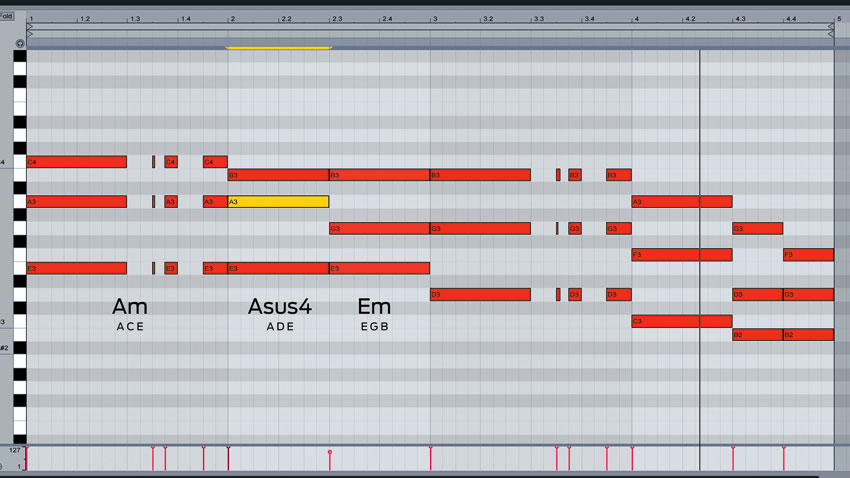
Take a normal major or minor triad - it doesn't matter which - and move its third up to play a perfect fourth, and you have a suspended 4 chord, or sus4 (root-5-7). Because it lacks a third, the chord sounds neither major nor minor, with a spacey, ambiguous feel. It's often followed by the regular major or minor chord, creating a satisfying resolution.
To go full classical, 'prepare' the suspension by preceding it with a chord that contains the suspended note. In our A minor example, we play Am (A-C-E), Esus4 (E-A-B), Em (E-G-B). A is the prepared note, shared by Am and Esus4, resolving to the G in Em.
Click to download the tutorial files.
No suspension (chords only)
No suspension (Full Mix)
Sus4 resolving to expected minor chord (chords only)
Sus4 resolving to expected minor chord (full mix)
Sus4 resolving to unexpected major chord (chords only)
Sus4 resolving to unexpected major chord (full mix)
4. Seventh chords
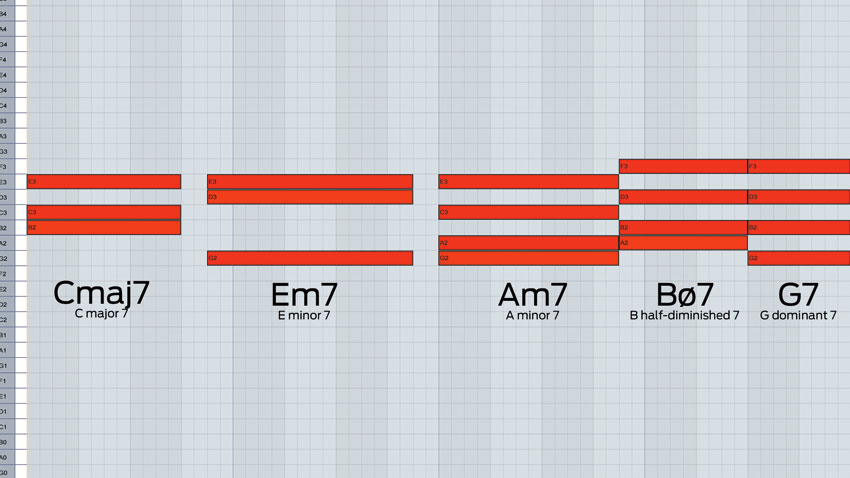
If it's jazzy sophistication and smouldering sensuality you're after, it's time you tried seventh chords…
Click to download the tutorial files.
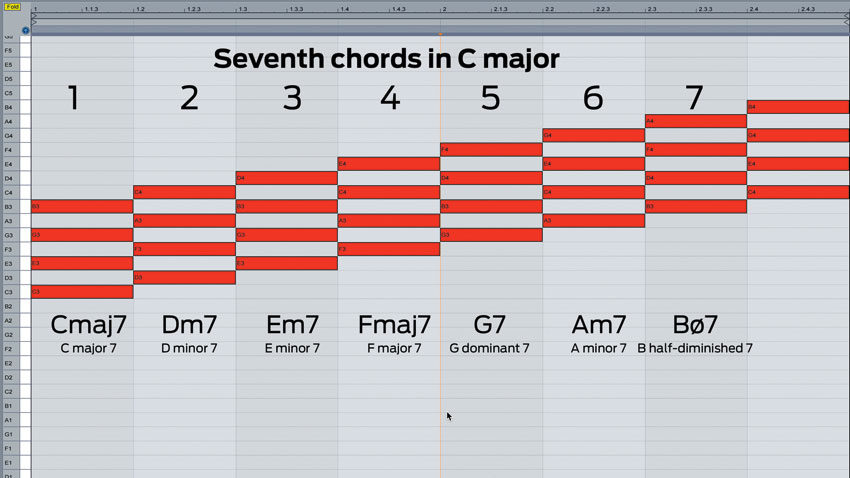
Step 1: Triads use the 1-3-5 formula, but if you continue stacking alternate notes, your next stop would be 1-3-5-7, comprising the root, third, fifth and seventh. This makes a seventh chord, and shown above are those built on the C major scale.
1a. C major demo - Normal triad chords (mix)
1a. C major demo - Normal triad chords (solo)
1b. C major demo - Seventh chords (mix)
1b. C major demo - Seventh chords (solo)
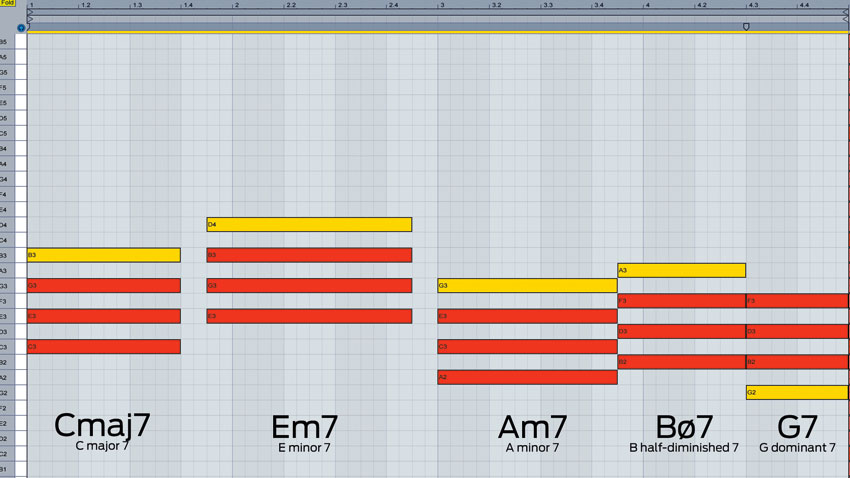
Step 2: C major demo - Normal triad chords (chords).mid is a triad sequence. To make sevenths, we extend the pattern of alternating notes, adding an extra note on top of each chord. For the final half-bar chord, add the note to the bottom instead, so we have two different chords in that bar. Our added notes are in yellow.
2a. B minor demo - Normal triad chords (mix)
2a. B minor demo - Normal triad chords (solo)
2b. B minor demo - Seventh chords (mix)
2b. B minor demo - Seventh chords (solo)

Step 3: Seventh chords can sound dense, but you can remove the fifth to slim them down. They can be inverted, too, for a smoother flow. Combine these tricks for sweet progressions, as in our finished sequence above.
5. Other extended chords
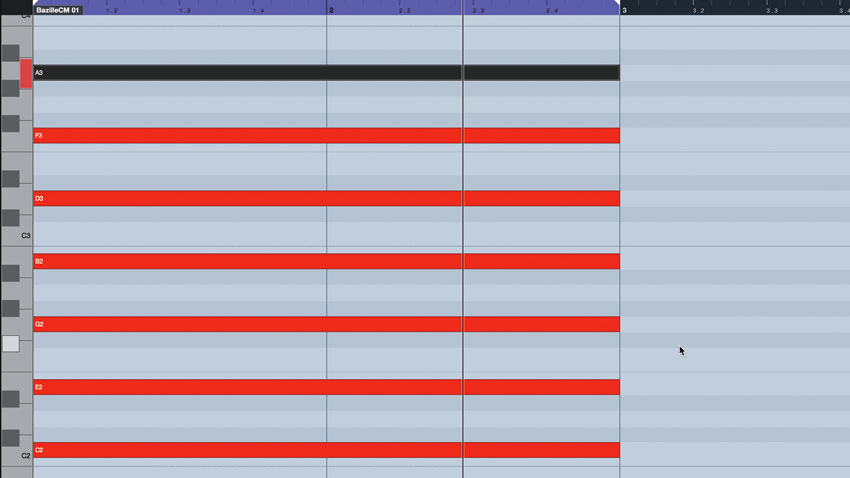
Just as you can stack an extra third on top of a triad to add the seventh, you can keep piling thirds on top to introduce ninths, elevenths and thirteenths. Intervals this large give us the same notes as a second, fourth and sixth, just one octave higher. On the right is C major 13: C-E-G-B-D-F-A. If you just add on the ninth interval, without the seventh, you have an 'add 9' chord (which you'll read more about in the next tip).
C major triad (1-3-5)
C major 7 (1-3-5-7)
C major 9 (1-3-5-7-9)
C add 9 (1-3-5-9)
C major 11 (1-3-5-7-9-11)
C major 13 (1-3-5-7-9-11-13)
C minor 13 (1-b3-5-b7-9-11-13)
C dominant 13 (1-3-5-b7-9-11-13)
C dominant 13 - Rootless (3-5-b7-9-11-13)
C dominant 13 - Rootless and no fifth (3-b7-9-11-13)
6. Making 'add' chords in a snap

You can create custom chords that aren't sevenths or extended chords by simply adding in extra notes, usually the 2nd, 4th or 6th. These chords are called add2, add4 and add6. There's also the add9 chord, which is the same as the add2 chord, except the added note is an octave higher, rather than sitting right next to the root note.
In our video and audio example, we first turn a C major chord into an add2 by adding its 2nd note, D… Then we transpose the added note to make add9. This works well to transition into the E minor 7 that follows, since that chord also contains a D.
Click to download tutorial files.
C add 2
C add 4
C add 6
C add 9
C Major triad
Sequence starting with C major triad chord
Sequence starting with Cadd2
Sequence starting with Cadd9
Computer Music magazine is the world’s best selling publication dedicated solely to making great music with your Mac or PC computer. Each issue it brings its lucky readers the best in cutting-edge tutorials, need-to-know, expert software reviews and even all the tools you actually need to make great music today, courtesy of our legendary CM Plugin Suite.
“How daring to have a long intro before he’s even singing. It’s like psychedelic Mozart”: With The Rose Of Laura Nyro, Elton John and Brandi Carlile are paying tribute to both a 'forgotten' songwriter and the lost art of the long song intro
“The verse tricks you into thinking that it’s in a certain key and has this ‘simplistic’ musical language, but then it flips”: Charli XCX’s Brat collaborator Jon Shave on how they created Sympathy Is A Knife










